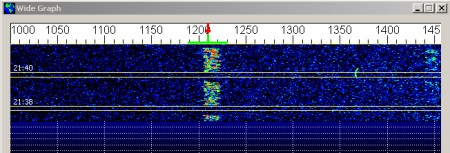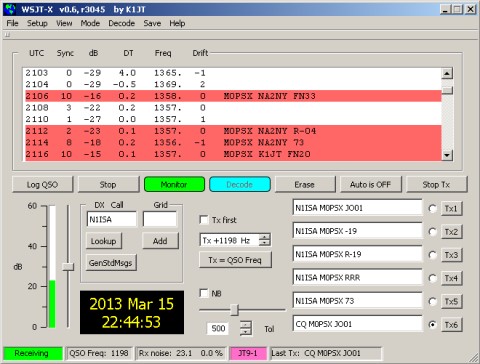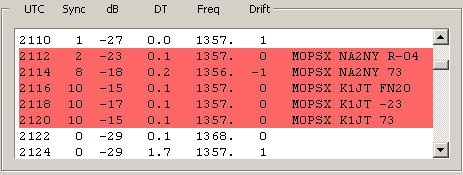It’s no secret that I’m quite partial to experimenting with various different data modes on HF, including PSK31, RTTY, JT65, WSPR, SSTV and Olivia. Much had been said on this site about how to get into working with data on HF, and if trying out data is of interest, try our getting started with data modes guide.
Today, keen to try something new, I took a look at the JT9 data mode. As the names suggests, this a variant of JT65, the weak signal QSO mode developed by Joe Taylor K1JT in 2003.
Weak data modes
If you’re not familiar with JT65, the mode can be used to can get a data signal through when all other types of signal can’t make it. My antenna system at home is very basic, meaning that working the world using voice isn’t an option. Voice contact to Europe is fine with my modest long-wire antenna, but until I started dabbling with data, contact with the US alluded me. PSK31 became my friend, allowing contacts outside of Europe, but JT65 has been the mode that’s opened the world to me.
JT9
If you’ve tried JT65, then JT9 will be very familiar. A typical QSO takes 7 minutes, with each part of the QSO consisting of two of three words sent over a 50 second period – as an example, my opening transmission would be “CQ M0PSX JOIN”, which gives callsign and the first part of my Maidenhead locator. For more on JT65, see our “What is JT65?” guide.
JT9 seems to be even better at cutting through the noise to get a signal through, and appears to be ideal for the lower frequency range, typically 160m. My system doesn’t do well that low down, but it seems that much of the JT9 action is on 14.078MHz on the 20m band, which presents no problem for me.

It’s only fair to say that, at the moment, JT9 is in the early stages – it’s not a busy mode, and the software is still very much in the beta phase. If you’re looking for a busy data mode to get you started, then JT9 isn’t it – but if like me, you like a little experimentation, this is a good mode to play with, and it’s nice to be “in” early at the birth of a new mode.
If you want to give it a try, then you’ll need to download the free app WSJT-X from Joe Taylor’s site: http://www.physics.princeton.edu/pulsar/K1JT/wsjt.html

At the time of writing, v0.6 is out, and it’s still very much under development, at the moment lacking some of the features found in JT65 software such as WSJT and JT65-HF. Development is ongoing, and those using it are very much beta testing the software and the protocol. From my very limited tests, it’s looking promising.
Contact with Joe Taylor K1JT
I have to smile. On my first day with this new mode, my sixth CQ of Day One was answered by one K1JT – Yes, QSO number 6 on this new mode was with the creator of JT9, JT65 and WSPR… Joe Taylor. I feel genuinely honoured! Here is a screenshot of my contact with Joe.

A QSO card will be on its way, as a card from “Mr. JT” would be a great one for my collection.
Handy JT9 links
The following links have proved very helpful:
If you’ve given JT9 a try, please add a comment below…

